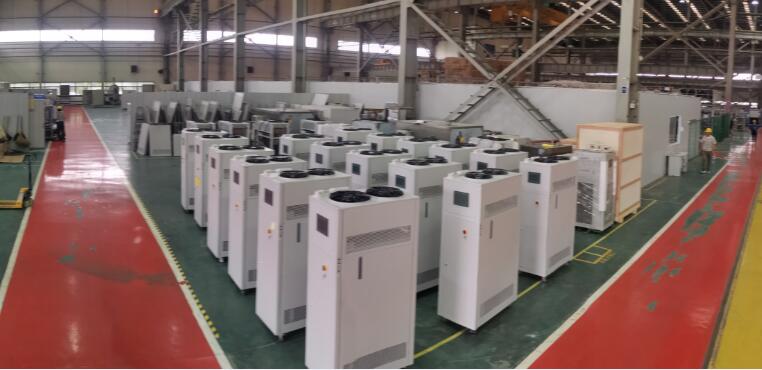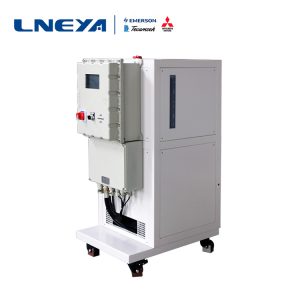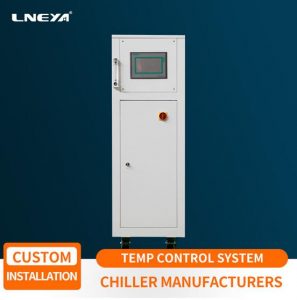Automotive new energy battery / motor thermal management performance test
1. Thermal management physical architecture analysis
New energy vehicle thermal management systems typically include engine cooling systems, power device cooling systems for motors, motor controllers, battery pack cooling/heating systems, passenger compartment cooling and heating systems. The thermal management physical architecture analysis starts from three aspects: medium flow, energy flow, and signal flow. Among them, media flow analysis includes air flow path analysis, cooling water flow path analysis, refrigerant flow path analysis and oil cooling medium path analysis; energy flow analysis mainly includes power system high temperature heat source heat generation and heat transfer path analysis, thermal management system Energy conversion mode and transmission path analysis of power-consuming components; signal flow analysis is analyzed according to sensor-controller-actuator signal transmission path, and the analysis content mainly includes sensor signal type, signal transmission and interaction mode.
2. Thermal management performance test and working condition formulation method
The vehicle thermal management performance test generally includes vehicle heat balance test, vehicle air conditioning cooling performance test, vehicle air conditioning heating performance test, vehicle air conditioning optimal charge test, vehicle anti-frost performance test, windshield glass defrosting Performance test, windshield defogging performance test, vehicle air conditioning air volume test.
For the new energy vehicle thermal balance test, the pure electric vehicle usually cannot complete the whole working condition test under the single charge, and the switching of the hybrid vehicle power mode has a great influence on the thermal management performance test result; for the power battery, The thermal management performance not only considers the discharge state, but also needs to consider the state of charge. The charging and discharging depth of each model is also different; therefore, the new energy vehicle thermal balance test conditions need to be formulated according to the characteristics of a single vehicle.
The following conditions apply to the development of working conditions:
(1) Determine the test environment temperature, humidity and light intensity according to the characteristics of the development model positioning market;
(2) The definition of working conditions needs to be combined with the driving conditions of typical automobile roads, usually including mountain road climbing, high-speed climbing, high-speed, urban working conditions; the determination of the speed and the climbing degree under various working conditions is based on the standard vehicle or the whole vehicle. Performance model determination;
(3) The conditions for determining the end of each working condition test can be referred to:
o The longest distance the current operating condition can operate, or the SOC state from full power to an allowable depth of discharge;
o According to the road test criteria: the temperature rise is less than 2 °C within 4 minutes, and the temperature rise rate is less than the previous one after two adjacent time periods;
o PHEV models, mode switching stop test.

3. Strategy analysis and working condition formulation method
The purpose of the strategy analysis of the new energy vehicle thermal management system is to analyze the control strategy of the vehicle thermal management system under different working conditions and environmental conditions, and obtain the key components of the cooling system and the air conditioning system. Basic control ideas (such as fans, pumps, solenoid valves, compressors, etc.). The control strategy analysis content mainly includes:
(1) Low temperature loop thermal management strategy (battery thermal management system): low temperature discharge heating control strategy; low temperature charging heating control strategy; high temperature discharge cooling control strategy; high temperature charging and cooling control strategy.
(2) High temperature loop thermal management strategy (motor and controller thermal management system): motor low temperature heating control strategy; motor high temperature cooling control strategy.
(3) Coordination strategy for air conditioning system and low temperature circuit cooling.
(4) Coordination strategy between air conditioning system and low temperature circuit heating.
Policy analysis conditions are usually based on vehicle usage scenarios and usually include three categories:
(1) In the static state, investigate the high and low temperature slow charge and fast charge management strategies.
(2) Start and idle state, investigate the thermal management strategy under high and low temperature idle speed and start-up.
(3) Comprehensive driving conditions, such as high temperature and high speed, low temperature and high speed, high temperature climbing, rapid acceleration, and rapid deceleration, and investigating cooling and heating strategies.
4, thermal management performance test evaluation
China Automotive Research Automotive Powertrain Research Center has a vehicle thermal management benchmarking hardware and data acquisition platform. With the goal of vehicle thermal management performance development, the thermal management performance test evaluation platform was developed to realize the deep excavation and analysis of thermal management performance data, covering more than 20 models including traditional fuel vehicles, pure electric vehicles and hybrid vehicles.
Through the analysis of physical architecture of thermal management of new energy vehicles, thermal management performance testing, thermal management strategy analysis and evaluation of test results, it provides support for the development and optimization of thermal management performance of new energy vehicles.
Recomendaciones relacionadas
-
Close contact between new energy vehicles and LNEYA battery test temperature control units
1467Based on the current situation of energy issues and the booming development of the automotive industry, new energy vehicles are as timely as the modern automotive industry. The battery part of the new energy vehicle plays a decisive role in the pe...
Ver detalles -
Instrucciones de procesamiento de la unidad de recuperación de condensación de gas Vocs
1311Con la inspección continua de la protección del medio ambiente, el dispositivo de recuperación de condensación de gas VOCS de Wuxi LNEYA también ha recibido la atención continua del público. La mayoría de las industrias químicas, farmacéuticas e industriales están tratando urgentemente con...
Ver detalles -
LNEYA high and low temperature heating refrigerator maintenance instructions
1145High and low temperature heating refrigerators use circulating water to replace circulating water regularly every month. If heat transfer oil is used, heat transfer oil should be replaced periodically every six months to one year. When the high an...
Ver detalles -
How should an industrial chiller manufacturer choose
7502. Try to select well-known brandindustrial chiller manufacturers with technical professional work experience.3. If there are visits and inspections, wemust attach great importance to the big aspects and pay more attention to thesmall key point...
Ver detalles
 LNEYA Enfriadoras industriales Fabricante Proveedor
LNEYA Enfriadoras industriales Fabricante Proveedor













